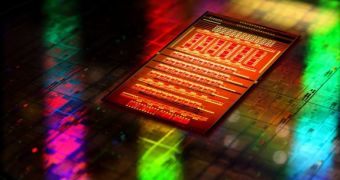IBM recently announced its milestone that will supposedly make Exaflop Supercomputers more feasible, namely chips that use optical interconnections, but Intel now says that said processors may not be efficient to manufacture.
As users are likely used to by now, whenever a company announces a new milestone, its rivals will start to pick at whatever disadvantages it might have compared to their own.
This once, such a thing has occurred between IBM and Intel, the latter having started to question the former's newest processor.
What IBM recently did was announce the CMOS Integrated Silicon Nanophotonics, a chip that combines both electrical and optical devices.
It is supposed to significantly boost performance by using light to transmit data while integrating modulators, germanium photodetectors and ultra-compact wavelength-division multiplexers.
The other major asset is that such chips can be built using standard CMOS manufacturing lines.
Now, Intel is revealed to have said that it believes its own products are easier to manufacture and more efficient overall.
It claims that it is preferable to make chips on the latest foundry processes and add optical interconnections later, instead of being made with all parts form the get-go on a CMOS process.
"This [IBM] research is another example of others also validating that silicon photonics is the path to high bandwidth, low-cost optical communications,”said Nick Knupffer, an Intel's global communications manager, in the interview with ZDNet UK.
“While this research is interesting, there are still many challenges to commercialize this approach such as integration of lasers and integration with advanced future transistor processes," he added.
"Keeping the CMOS and photonics separate will allow us to use the most energy-efficient, leading edge manufacturing process for electronics as we scale link speeds. For exascale systems, energy efficiency is a major concern,” he explained.
“Although [Intel's approach to nanophotonics] does require the bonding of indium phosphide to the silicon, this is done at the chip or wafer level, allowing us to create all the lasers we need in one bonding step," Knupffer concluded.

 14 DAY TRIAL //
14 DAY TRIAL //